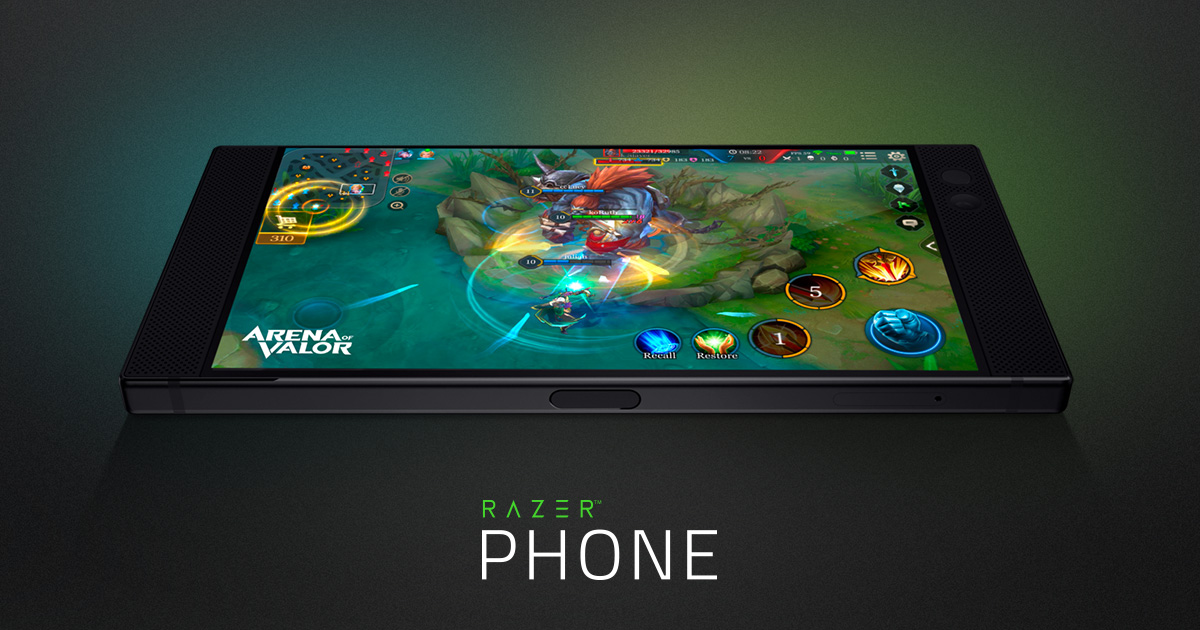
The State of Mobile Gaming and Razer’s New Gaming Phone
The year 2017 came to an end and the number of available app in the Google Play Store climbed to 3.3 million. Not too far behind is Apple’s App Store with 2.2 million available apps. Combined, the global mobile gaming market generated $36.9 billion in revenue in 2016, overtaking the PC gaming market for the first time in history. According to the latest quarterly update by Newzoo, a leading provider of market intelligence covering the global games, e-sports, and mobile markets, mobile gaming will represent just more than half of the total games market by 2020.A study by PayPal and SuperData revealed that 78 percent of US respondents prefer gaming on smartphones instead of tablets, and recent smash hits such as Niantic’s Pokémon Go, which was downloaded over 100 million times in its first month alone, or Clash Royal, which generates over $2 million in daily revenue from in-app purchases, demonstrate that mobile gamers have a huge appetite for entertaining games and are willing to spend a lot of money on them.
According to Tapjoy’s report The Changing Face of Mobile Gamers: What Brands Need to Know, mobile gamers are most interested in puzzle games (59 percent), followed by strategy games (38 percent), trivia games (33 percent), and casino/card games (27 percent). Perhaps surprisingly, player-versus-player (15) and sports (11 percent) games are among the least popular categories of mobile games.
The lack of interest in more graphically intense mobile games with complex gameplay mechanics and cinematic storytelling could be, at least in part, attributed to the small number of smartphones created with gaming in mind.
Razer Phone: A Game Changer?
On November 1st, Razer, a company known for its gaming peripherals and computers, announced its grand entry into the smartphone market with the reveal of the Razer Phone, a smartphone created exclusively to satisfy the needs of mobile gamers.Razer’s announcement didn’t come as a big surprise because, earlier this year, the company acquired fledgling smartphone maker Nextbit, who has given us the Robin, a smartphone that bears a striking resemblance to the Razer Phone.
Made from solid aluminum with a black matte finish, the Razer Phone purposefully goes against the biggest trend of this smartphone generation: bezel-less design. Unlike the iPhone X, the Samsung Galaxy S8, or the already largely forgotten Essential Phone, the Razer Phone sports unusually thick top and bottom bezels, which hide stereo speakers with support for Dolby Atmos for Mobile.
Thanks to the thick bezels, the Razor Phone can be comfortably held in the landscape mode, and the large speakers hidden inside deliver an immersive audio experience with minimal distortion even at higher volume levels. Realizing that one of the biggest attractions of mobile gaming is that it can happen anywhere, Razer didn’t forget about gamers who prefer or are forced to use headphones, including a USB-C audio adapter with a THX-certified 24-bit DAC right in the box.
The Razor Phone is powered by a Snapdragon 835 processor and Adreno 540 GPU, and it features 64 GB of expandable storage and 8 GB of RAM. Such a large amount of RAM allows Razor to use a less aggressive memory management strategy to keep more processes running in the background at the same time, which can significantly reduce the time it takes to switch between apps. The smartphone’s large 4,000 mAh battery promises a full day of intense gaming and extremely quick charging thanks to the support for Qualcomm Quick Charge 4.0+, which includes all the benefits of Quick Charge 4 plus Dual Charge, intelligent thermal balancing, and several additional advanced safety features.
The phone’s 16:9 5.7-inch QHD IPS Sharp IGZO display isn’t the largest mobile display on the market nor the most color-accurate, but it delivers the highest refresh rates of all Android smartphones currently available: up to 120 Hz. “This means, zero lag or stuttering—just fluid, buttery smooth motion content for you to enjoy,” claims Razor.
Because refreshing everything 120 times per second takes its toll on the battery, Razer made the refresh rate adaptive, meaning that it dynamically adjusts itself for the best viewing experience as well as the best battery life. On the home screen, the refresh rate can be as low as 10 Hz, but it can instantly shoot up to 120 Hz when a user enters a game and stay at 120 Hz for as long as needed. Besides relying only on the automatic refresh rate adjustment to prolong the smartphone’s battery life, you can also manually set a frame rate cap of 60, 90, or 120 Hz as well as change the display resolution to 720p, 1080p, or the native QHD.
Even though only a small handful of popular games take advantage of either the front- or the rear-facing camera, the Razor Phone still comes with a decent dual 12 MP camera system: one camera taking wide-angle pictures and the other one being zoomed. The wide-angle camera has f/1.75 aperture, while the telephoto lens offers f/2.6 aperture. The front-facing camera has 8 MP.
The Razor Phone ships with Android 7.1.1 Nougat, and Razer plans to upgrade to Android 8 Oreo in spring 2018.
So far, Razor’s first entry into the smartphone market has been met with unanimously favorable reviews and positive reception from smartphone enthusiasts and mobile gamers alike. If the Razor Phone turns out to be a success, it might inspire other smartphone manufacturers to follow suit and release more smartphones aimed exclusively at mobile gamers, which could even reshape the mobile gaming market itself by increasing the demand for high-fidelity games that can push cutting-edge hardware to its limits.
Comments
Tags: mobile, mobile device, razer
Trackback from your site.